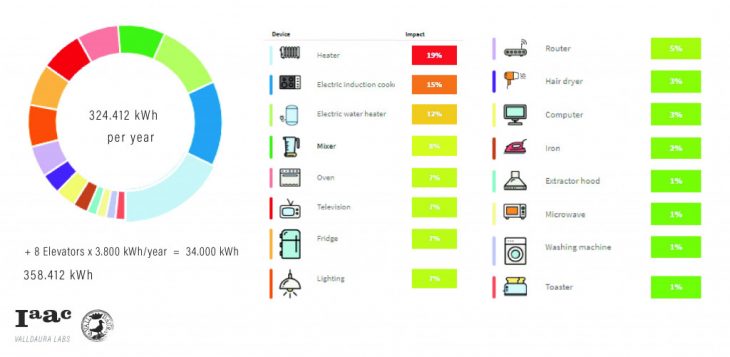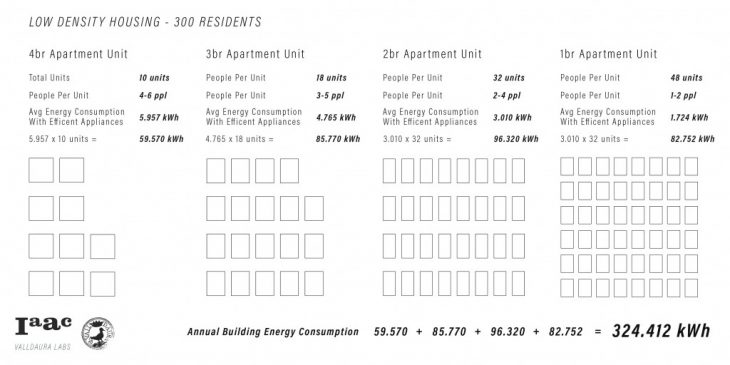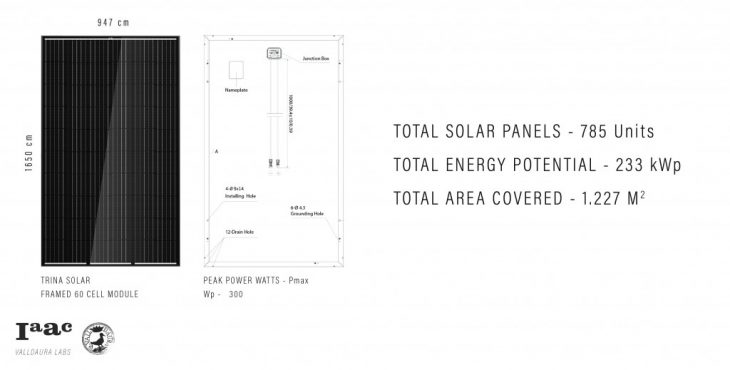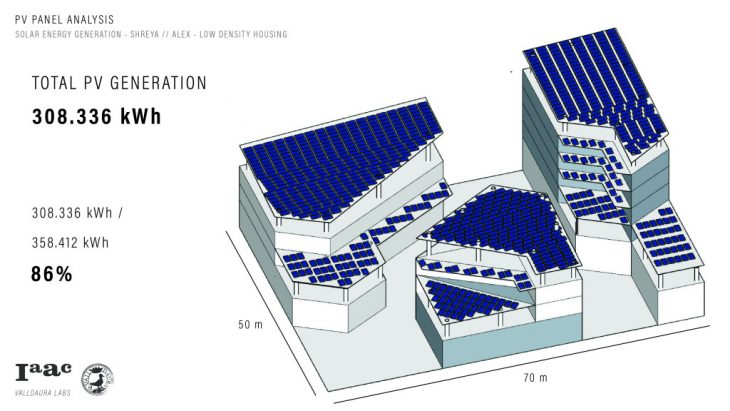METABOLIC STRUCTURES : ENERGY || LOW DENSITY HOUSING
Energy and energy conservation is the focal point of today’s dialogue surrounding self-sufficiency and energy efficiency. It has become vitally important to shun heavily polluting traditional practices and move towards low-emission and increasingly self-reliant energy production sources. Through this module we explored the ways and extents to which we could push our structures to function on renewable energy sources.
We start by calculating the energy requirements of an individual apartment and then scale that up to calculate the energy requirements of our entire building. Following chart shows the approximate energy consumption of various appliances in a housing unit.

From this chart we derive the design strategies we can implement to focus on energy saving to lower the levels of consumption by using energy saving appliances as well as passive heating and cooling strategies. Upon calculating the total consumption for a single unit we combine the data to calculate the energy consumption for the entire building as illustrated in the following chart.

From the total consumption we move to a schematic design for our renewable energy production source which are photovoltaic panels. We cover the maximum possible surface area to give an estimate of the maximum energy production capacity of the building.


METABOLIC STRUCTURES : ENERGY || LOW DENSITY HOUSING is a module of IaaC, Institute for Advanced Architecture of Catalonia
Developed at the Masters in Advanced Ecological Buildings and Biocities (MAEBB) in 2019-2020 by students: Alex Hadley & Shreya Sharma
Faculty: Oscar Aceves
